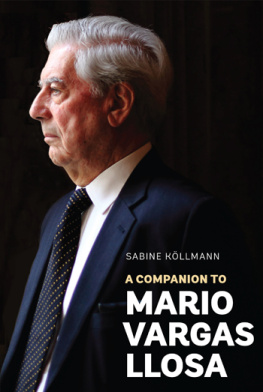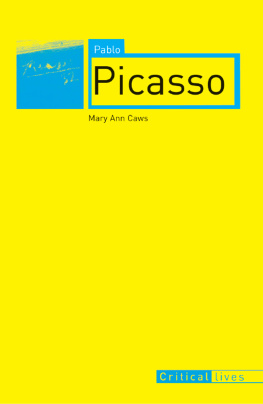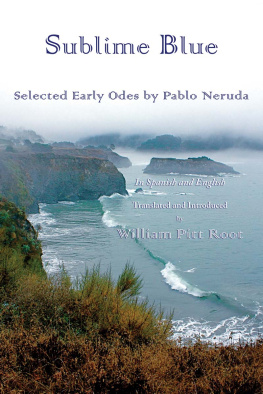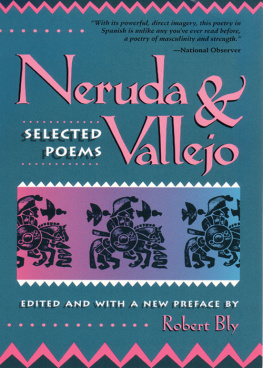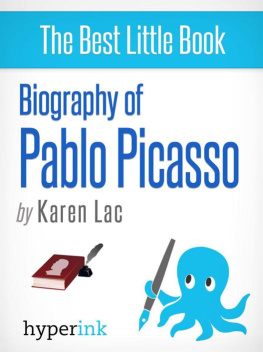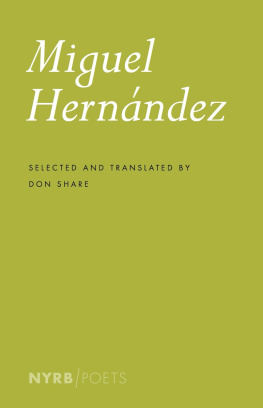PABLO NERUDA
PABLO NERUDA
A Passion for Life
ADAM FEINSTEIN
BLOOMSBURY
For my family
Copyright 2.004 by Adam Feinstein
All rights reserved. No part of this book may be used or reproduced in any manner whatsoever without written permission from the publisher except in the case of brief quotations embodied in critical articles or reviews. For information address
Bloomsbury Publishing, 175 Fifth Avenue, New York, NY 10010.
Published by Bloomsbury Publishing, New York and London
Distributed to the trade by Holtzbrinck Publishers.
All papers used by Bloomsbury Publishing are natural, recyclable products made from wood grown in well-managed forests. The manufacturing processes conform to the environmental regulations of the country of origin.
The Library of Congress has cataloged the hardcover edition as follows:
Feinstein, Adam.
Pablo Neruda : a passion for life / by Adam Feinstein.
p. cm.
Includes bibliographical references and index.
1. Neruda, Pablo, 1904-1973. 2. Authors, Chilean20th centuryBiography. I. Title.
PQ8097.N4Z6174 2004
861'.62dC22
2004000715
First published in the United States by Bloomsbury Publishing in 2004
This paperback edition published in 2005
eISBN: 978-1-59691-781-1
1 3 5 7 9 10 8 6 4 2
Typeset by Hewer Text Ltd, Edinburgh
Printed in the United States by Quebecor World, Fairfield
Contents
It is no exaggeration to say that I could not have written this biography without the generous support of Professor Robert Pring-Mill of St Catherine's College, Oxford. I owe him an immense debt of gratitude for his friendship and his hospitality, his kindness in lending me invaluable documents, in sharing his time, his research, advice, list of contacts in Chile and personal anecdotes from his own friendship with Pablo Neruda. Robert also read the manuscript of this book, made copious notes and corrected some infelicities in my translations. Any errors that remain are, of course, my own.
I am also enormously grateful to the Fundacion Pablo Neruda in Santiago for putting me in touch with other friends and relatives of Neruda who helped me while I was in Chile.
Support from the Wingate Foundation and the Leverhulme Trust allowed me to travel to, and research the archives in, Chile, Spain and Russia.
I am grateful to Jose Miguel Varas, editor of the Chilean cultural magazine Rocinante, for his insights and for providing me with further useful names and telephone numbers.
I appreciate the help given to me by Juan Camilo Lorca at the Biblioteca Nacional in Santiago in guiding me through the many files on Neruda at the library, and to staff at the Biblioteca Municipal in Barcelona and the National Archives in London for their patience in locating various relevant documents.
I am immensely indebted to Kathleen Boet-Herbert in The Hague for her remarkable investigation into the life of Neruda's first wife, Maruca, and her discovery of many previously unpublished details. I am also very grateful to Anabel Torres for help in this area.
My thanks go to Julio Galvez in Chile for supplying information about Neruda's time in Spain and to Frances Stonor Saunders for sharing her documentation on the successful campaign to prevent Neruda winning the 1964 Nobel Prize.
For their willingness to share their insights and their memories of Neruda in Chile, I must thank: Volodia Teitelboim, Margarita Aguirre, Aida Figuer-oa, Sergio Insunza, Ines Valenzuela, Ines Figueroa; Poli Delano, Francisco Velasco, Marie Martner, Sara Vial, Victor Pey, Roser Bru, Jose Balmes, Maria Galvez, Victoria Lago, Federico Schopf, Rodolfo Reyes and Irma Pacheco in Santiago; Francisco Velasco and Marie Martner in Valparaiso; Juan Carlos Reyes, Bernardo Reyes and Lidia Herrera in Temuco and Nicanor Parra in Las Cruces.
I have to pay particular tribute to Neruda's friend, secretary and biographer Margarita Aguirre, whom I met on several occasions in Santiago and who sadly died in December 2003.
Special thanks must also go to the Chilean poet and journalist, Sara Vial, for many hours of delightful and illuminating conversation in Vina del Mar and her help in acquiring valuable documentation.
I am immensely grateful to Arthur Miller for sharing his experiences of organising the 1966 PEN Congress in New York and his personal impressions of Pablo Neruda during his stay in the United States.
Vera Kuteishikova in Moscow also gave me invaluable insights into Neruda's many visits to the former Soviet Union, and this help is much appreciated. I am also grateful to the staff of the National Archive Centre in Moscow for their help.
I also acknowledge, with gratitude, the help given to me by Liu Hongbin, who translated various Chinese texts relating to Neruda.
I would like to thank the staff members at Neruda's three houses in Chile La Chascona, Isla Negra and La Sebastiana - who allowed me to make lengthy tours of the buildings and their surroundings and to take photographs.
I am also grateful to Professor Jason Wilson, professor of Latin American literature at London University, for many stimulating discussions while writing this book and for lending me a number of useful documents. I would also like to thank Dr Dominic Moran, of Oxford University, who made helpful suggestions for this paperback edition.
I must pay tribute to Hernan Loyola's new edition of Neruda's Complete Works, which has proved a constant source of information and delight.
I should also like to thank Liz Calder and Alexandra Pringle for their unwavering enthusiasm for this project, my agent Victoria Hobbs, and my editors at Bloomsbury, Bill Swainson and Victoria Millar, whose task it has been to smooth out the rough edges.
ADAM FEINSTEIN
Unless otherwise stated, these photographs form part of the personal archive of one of Chile's best-known poets and journalists, Sara Vial, who kindly lent them to the author. Most appeared in Vial's illuminating book, Neruda en Valparaiso, first published in 1983, and in its four subsequent editions. Vial was a close friend of Neruda, who was a witness at her wedding and wrote a prologue to her 1958 book, La ciudad indecible. Many have also appeared in the following Chilean magazines: Hoy, Siembra, Sucesos, Zig-Zag, Hechos Mundiales, Vistazo, Aurora de Chile and Anales de la Universidad de Chile.
Neruda's father, Jose del Carmen, in Temuco. (Fundacion Pablo Neruda, archive shared with Bernardo Reyes)
Neruda's mother, Rosa Neftali Basoalto Opazo, who died two months after giving birth to him. (Archivo Bernardo Reyes)
Neruda at the age of two at the Fundo Belen in Parral, belonging to one of his uncles, before the family moved to Temuco. {Archivo Bernardo Reyes)
The beach at Puerto Saavedra where Neruda played as a child. {Adam Feinstein)
Neruda (far right) during a visit to Temuco with {left to right): his father, Jose del Carmen; Neruda's half-sister, Laurita; his brother Rodolfo, and his stepmother, Trinidad (Mamadre). {Archivo Bernardo Reyes)
Temuco today. (Adam Feinstein)
Laurita and Neruda in Temuco.
Sketch of Laura Arrue (Milala), 1925, one of Neruda's Santiago girlfriends from his student days, by an unknown artist, with an inscription by Neruda, and included in Laura's album. (Robert Pring-Mill)
Neruda in his black cape as a student in Santiago in the 1920s. (Fundacion Pablo Neruda, Archivo Bernardo Reyes) Neruda as a student in Santiago in the 1920s. (Archivo Bernardo Reyes) Alberto Rojas Gimenez, the poet who introduced Neruda to the bohemian student life in Santiago.
Neruda (right) with his friend, Tomas Lago, in Santiago in 1927 before Neruda's departure for the Far East.



